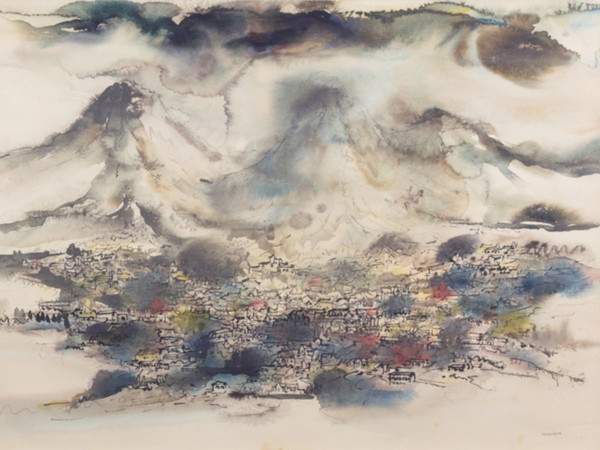Art from the Philippines is on display in Milan with 26 contemporary artists from the Asian country
Pintô International presents Living Earth: Contemporary Philippine Art introducing the work of 26 contemporary Filipino artists to Italian and international audiences. The exhibition aims to bridge the histories of two distinct but interconnected nations, the Philippines and Italy, by fostering an artistic dialogue on some universal themes: homeland, migration, identity. The exhibition will be on view from May 6 to 12 at the Milan-based cultural organization M.A.C. in collaboration with Fondazione Maimeri, and is co-curated by Luca Beatrice, curator of the 2009 Italian Pavilionat the Venice Biennale, and Patrick D. Flores, artistic director of the Singapore Biennale 2019 and previously curator of the 2015 Philippine Pavilion at the Venice Biennale.
The exhibition takes as its starting point the work of Leon Pacunayen (b. 1934), a Filipino artist who immigrated to Italy in the 1960s and still lives in Perugia, Italy. “Mountains hugging the earth, open skies and floating clouds”: these were the words used to describe Pacunayen’s delicate watercolors by gallery owner Lyd Arguilla, who in the 1960s founded the Philippine Art Gallery in Manila, at the time the nerve center of modernism in the country. Starting with Pacunayen’s contribution to Philippine art history, Pintô International’s exhibition in Milan explores the artist’s profound influence on his country’s contemporary landscape. This dialogue, however, expands to elements that cross Philippine national boundaries, highlighting the global influence of Italian art technique: the melancholic atmospheres and somber tones of Pacunayen’s painting, which are found in much of Philippine art today.
Among the highlights of the exhibition is the iconic painting Mother (1999) by Mark Justiniani, an artist representing the Philippines at the 2019 Venice Biennale. Hazy, if phosphorescent, Justiniani’s painting, which belongs to the permanent collection of the Pintô Art Museum, references a dreamlike space not unlike those characteristic of Pacunayen’s art. An example of the artist’s earliest works, the work is echoed by the paintings of Elmer Borlongan and Emmanuel Garibay, artists with whom he spent his formative years and with whom he founded the social-realism current in the Philippines of the late 1980s, just after the fall of the Marcos dictatorship. These works are contrasted with paintings by artists such as Manuel Ocampo, one of the most critically recognized Filipino artists internationally, and Rodel Tapaya, whose works emphasize a sense of transformation and transportation through his magical realism. Melancholic, somber and imbued with mystery, Johanna Helmuth ’s figurative scenes are mesmerizing portraits of typical moments of contemporary life in the Philippines. Helmuth, winner of the2018 Ateneo Art Award, given annually to an artist under 36, is joined by other emerging talents such as Jayson Oliveria, a pioneer of a gestural approach to painting that explicitly avoids perfection.
Following is the full list of presetni artists in the exhibition: Renz Baluyot, A. Barrioquinto, Elmer Borlongan, Zean Cabangis, Keb Cerda, Jigger C ruz, Marina Cruz, Ronson Culibrina, Igan D’Bayan, Dale Erispe, M. Andy Garcia, E. Garibay, Johanna Helmuth, Winner Jumalon, Mark Justiniani, John Marin, Raffy Napay, Gabi Nazareno, Manuel Ocampo, Jayson Oliveria, Jim Orencio, Lee Paje, Dexter Sy, Rodel Tapaya, Olan Ventura.
The exhibition, with free admission, runs May 6-12 in Milan at M.A.C. - Musica Arte e Cultura.
Pictured: Leon Pacunayen, View from Anaheim (1984; Watercolor on paper, 76 x 55.50 cm)
Source: release
 |
| Art from the Philippines is on display in Milan with 26 contemporary artists from the Asian country |
Warning: the translation into English of the original Italian article was created using automatic tools. We undertake to review all articles, but we do not guarantee the total absence of inaccuracies in the translation due to the program. You can find the original by clicking on the ITA button. If you find any mistake,please contact us.



























